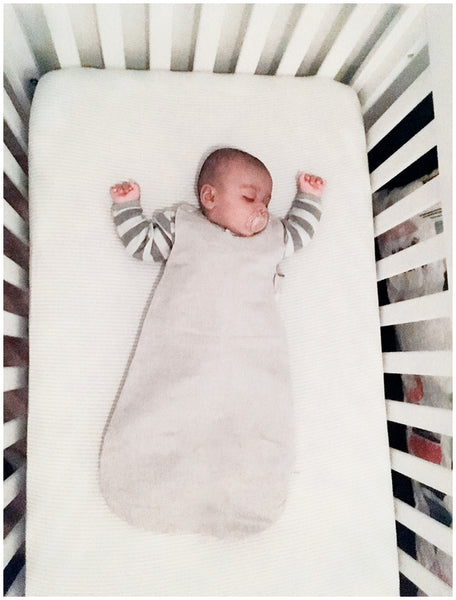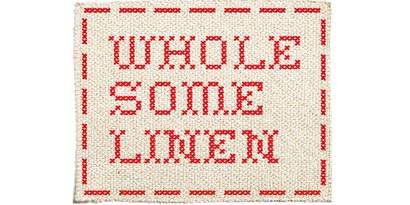Your Cart is Empty
FREE SHIPPING FOR ALL ORDERS $200+
FREE SHIPPING FOR ALL ORDERS $200+
Safe Sleep Tips for Babies
September 14, 2017 3 min read


Congratulations Internets, the word is out! Baby Sleep Safety has become essential reading for any current or future mamas and papas. The do’s and do nots when it comes to their Babies Sleep Safety is out there, information disseminated. The numbers are in, the stats check out, SIDS deaths related to accidental suffocation, entrapment, and strangulation have come way way way down in the last few decades.
U.S. SIDS Rate and Sleep Position, 1988—2010 (Deaths per 1,000 Live Births)

SIDS is still claiming the lives of 3500 babies a year. Promoting safe sleep can help save lives of infants who die suddenly and unexpectedly while sleeping. This is almost 10 babies a day. At Wholesome Linen we believe that is 10 babies too many. Just like every other cause worth noting, Baby Safety gets it’s own month, which happens to be September is an opportunity to educate, remind and reinforce all the great lessons we have learned with regards to baby safety.
Do you know a current or future mom this information may help? Please share it with them.
There are key safe baby sleep messages:
1. Always put your baby on their back for sleep safety
- The safest place for a baby to sleep is on his or her back According to Healthy Mom & Baby, studies have proven that babies are less prone to choking on their backs.
- A babies feeding tube (esophagus) is positioned below/behind the airway tube (trachea).
- When a baby on their back regurgitates fluid, it will pool next to the esophagus, not the trachea. The opposite is true when babies are on their tummies.
- Side-positioning isn’t recommended because infants may roll over too soon when put to sleep in this position.
2. Choose a safe place for sleep
- Babies need firm, flat uncluttered sleep surface.
- The safest place for baby to sleep is in a crib, cradle or bassinet close to his or her parents’ bed and has been assembled and used according to manufactures instructions.
- Adult beds, children's beds and soft surfaces like sofas or upholstered chairs are not safe for infant sleep. Babies can fall, be strangled or suffocate if they get trapped under bedding or another person. Bumper Pads with ties are not recommended.
- Room-sharing is recommended until baby is at least six 6 month old. Room-sharing means parents and baby share the room but each have their own separate sleep surface. This facilitates night time feeding by keeping baby close without the risk of bed sharing. According the Canadian Pediatric Societysuccessful breastfeedin
g is not dependent on sharing a sleeping surface. However, for women who may bring their infant into bed to breastfeed, the risk of SIDS is not increased when the infant is placed back to sleep in a crib, cradle, or bassinet following the feeding. - Bed-sharing is never recommended by neither Canadian or American Pediatric Society.
- A further and very crucial point on clean breathing protect babies from second-hand smoke before and after birth whether at home, during the travel or with other caregivers. Exposure to second-hand smoke greatly increases the risk of SIDS.
3. Choose non-toxic and breathable mattresses and bedding
- Safer Breathing: Many typical products (especially mattresses) contain chemicals that are known carcinogens, hormone disruptors, and other irritants. By choosing naturally breathable, or other non-toxic materials like Flax Linen, hemp, wool, cotton, bamboo, you can avoid these and provide your child with cleaner air to breath while they sleep (12+ hrs a day).
- Moisture Absorbing: Most natural fabrics are superior for absorbing moisture and humidity, aiding in more comfortable and safe sleep. The most absorbing are flax linen and wool.
- Reduced Toxin Exposure: A baby's lungs and digestive systems are still developing in the months after birth, and it is important to create and maintain toxin-free environment for your child's development. Since your baby will be spending an extraordinary amount of time sleeping, there's no better way to ensure this safe environment than through the use of natural and organic baby bedding. If your baby has allergies try to stay away from wool and down natural bedding. Find out more information on 'Why to choose organic bedding for your baby’?
4. Prevent overheating
- Keep baby warm, not hot. Room temperature should be comfortable for adults in light clothing. The optimal recommended room temperature for newborn to sleep is between 65 to 70 °F (18-22°C).
- Instead of heavy blankets use well-fitting one-piece sleepers.
- If a light blanket is used it should be tucked firmly in at the end of the mattress, reaching only to the baby's chest.
- Overheating increases the risk of sudden infant death syndrome or (SIDS)
- Natural fabrics like flax linens will help regulate infants temperature and prevent overheating.
Subscribe
Sign up to get the latest on sales, new releases and more …

